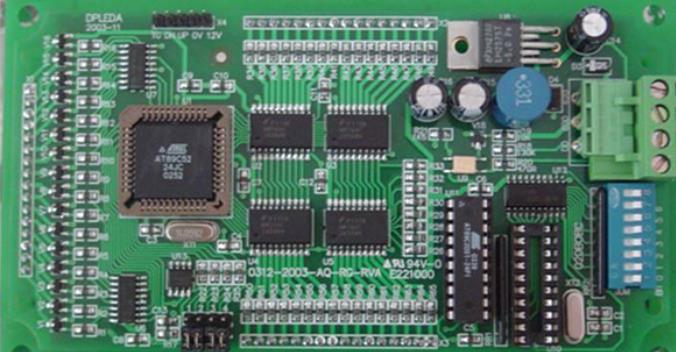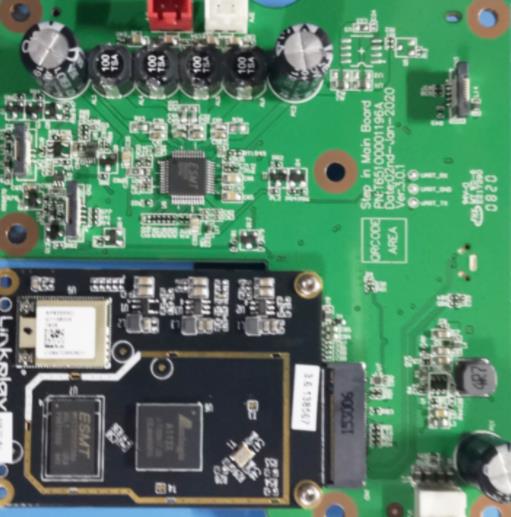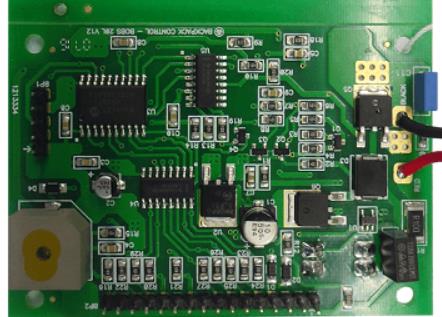Building 6, Zone 3, Yuekang Road,Bao'an District, Shenzhen, China
+86-13410863085Mon.-Sat.08:00-20:00

Welding and metal butt welding points in SMT wafer processing
Solder joint peeling mostly occurs in the through hole wave soldering process, but it also occurs in the SMT reflow soldering process The phenomenon is failure and peeling between the solder joint and the pad The main reason for this phenomenon is that there is a large difference between the thermal expansion coefficient of lead-free alloy and the matrix. When the solder joint is fixed, excessive stress will be generated in the peeling part If they are separated, the non eutectic property of some solder alloys is also one of the reasons for this phenomenon Therefore, there are two main methods to solve this PCB problem First, select the appropriate solder alloy; The other is to control the cooling speed so that the solder joint can be solidified as soon as possible to form a strong bonding force In addition to these methods, the magnitude of stress can also be reduced by design, that is, the area of copper ring of through-hole is reduced A popular method is to use SMD pad design, that is, to limit the area of copper ring passing through green solder mask However, this approach has two undesirable aspects First, slight peeling is not easy to see; The other is to form solder joints between green oil and SMD pad interface, which is not ideal from the perspective of life Belongs to
Title=Solder joint peeling problem in welding process SMT chip processing and its solution "/>
There are some peeling phenomena on the solder joints, as shown in the figure below, which are called cracks or tears (tears). If the problem occurs on the corrugated through hole solder joint, some suppliers in the industry think it is acceptable. This is mainly because the key part of the through-hole is not here. However, if it appears on the reflow solder joint, it should be considered as a quality problem, unless the degree is very small (similar to wrinkles).
Title=Fracture Layer on Solder Joint in SMT Patch Processing "/>
Effect of Gold on Solder Joint in SMT Patch
In the welding of electronic industry, gold has become one of the most commonly used surface coating metals due to its excellent stability and reliability. However, as an impurity in the solder, gold is very harmful to the ductility of the solder, because brittle tin gold (tin gold) intermetallic compounds (mainly AuSn4) are formed in the solder. Although low concentration of AuSn4 can improve the mechanical efficiency of many Korean tin solder, when the gold content in the solder exceeds 4%, the tensile strength and elongation at break will decrease rapidly. In the wave soldering process, the 1.5um thick pure gold and alloy layer on the pad can be completely dissolved into the molten solder, and the AuSn4 formed is not enough to damage the mechanical efficiency of the magnetic sheet. However, for the surface mount process, the acceptable thickness of the gold coating is very low and requires accurate calculation. Glazer et al. reported that for solder joints between plastic quad plane package (PQFP) and copper nickel gold (Cu Ni Au) metal coating on FR-4 PCB, when the gold concentration does not exceed 3.0 W/O, the reliability of solder joints will not be damaged.
Title=Effect of Gold and Metal Compounds SMT Patch on Solder Joint "/>
Excessive IMC endangers the mechanical strength of the solder joint and affects the formation of the solder joint due to its brittleness. For example, for the solder joints formed on the 1.63um gold layer of the Cu Ni Au pad, 7mil (175um) of Sn63Pb37 with 91% metal content is printed on the pad, and then reflowed. Tin gold metal compounds become particles and are widely dispersed in solder joints.
In PCB processing, in addition to selecting appropriate solder alloy and controlling the thickness of gold layer, changing the composition of gold containing base metal can also reduce the formation of intermetallic compounds.
Solder joint peeling mostly occurs in the through hole wave soldering process, but it also occurs in the SMT reflow soldering process The phenomenon is failure and peeling between the solder joint and the pad The main reason for this phenomenon is that there is a large difference between the thermal expansion coefficient of lead-free alloy and the matrix. When the solder joint is fixed, excessive stress will be generated in the peeling part If they are separated, the non eutectic property of some solder alloys is also one of the reasons for this phenomenon Therefore, there are two main methods to solve this PCB problem First, select the appropriate solder alloy; The other is to control the cooling speed so that the solder joint can be solidified as soon as possible to form a strong bonding force In addition to these methods, the magnitude of stress can also be reduced by design, that is, the area of copper ring of through-hole is reduced A popular method is to use SMD pad design, that is, to limit the area of copper ring passing through green solder mask However, this approach has two undesirable aspects First, slight peeling is not easy to see; The other is to form solder joints between green oil and SMD pad interface, which is not ideal from the perspective of life Belongs to
Title=Solder joint peeling problem in welding process SMT chip processing and its solution "/>
There are some peeling phenomena on the solder joints, as shown in the figure below, which are called cracks or tears (tears). If the problem occurs on the corrugated through hole solder joint, some suppliers in the industry think it is acceptable. This is mainly because the key part of the through-hole is not here. However, if it appears on the reflow solder joint, it should be considered as a quality problem, unless the degree is very small (similar to wrinkles).
Title=Fracture Layer on Solder Joint in SMT Patch Processing "/>

Effect of Gold on Solder Joint in SMT Patch
In the welding of electronic industry, gold has become one of the most commonly used surface coating metals due to its excellent stability and reliability. However, as an impurity in the solder, gold is very harmful to the ductility of the solder, because brittle tin gold (tin gold) intermetallic compounds (mainly AuSn4) are formed in the solder. Although low concentration of AuSn4 can improve the mechanical efficiency of many Korean tin solder, when the gold content in the solder exceeds 4%, the tensile strength and elongation at break will decrease rapidly. In the wave soldering process, the 1.5um thick pure gold and alloy layer on the pad can be completely dissolved into the molten solder, and the AuSn4 formed is not enough to damage the mechanical efficiency of the magnetic sheet. However, for the surface mount process, the acceptable thickness of the gold coating is very low and requires accurate calculation. Glazer et al. reported that for solder joints between plastic quad plane package (PQFP) and copper nickel gold (Cu Ni Au) metal coating on FR-4 PCB, when the gold concentration does not exceed 3.0 W/O, the reliability of solder joints will not be damaged.
Title=Effect of Gold and Metal Compounds SMT Patch on Solder Joint "/>
Excessive IMC endangers the mechanical strength of the solder joint and affects the formation of the solder joint due to its brittleness. For example, for the solder joints formed on the 1.63um gold layer of the Cu Ni Au pad, 7mil (175um) of Sn63Pb37 with 91% metal content is printed on the pad, and then reflowed. Tin gold metal compounds become particles and are widely dispersed in solder joints.
In PCB processing, in addition to selecting appropriate solder alloy and controlling the thickness of gold layer, changing the composition of gold containing base metal can also reduce the formation of intermetallic compounds.
Just upload Gerber files, BOM files and design files, and the KINGFORD team will provide a complete quotation within 24h.







